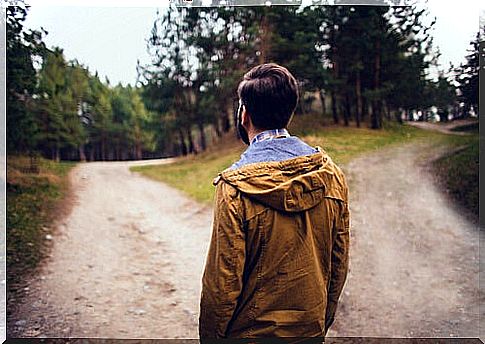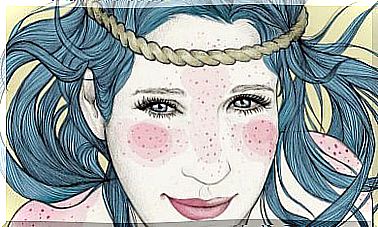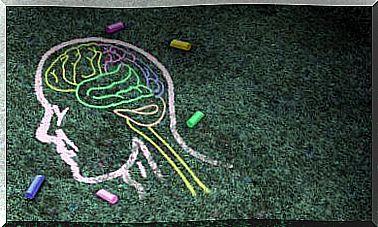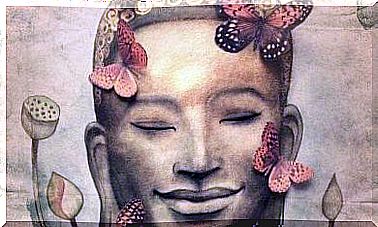Problem-solving Therapy: The Scientific Method For Making Decisions

Oh, the problems, the damn problems! They have been breaking our heads all our lives. From those who put us in school to learn mathematics to those we meet in our day to day. The good thing is that, before dealing with the first ones, we had some teachers who taught us the procedure to solve them.
But what can we do to deal with those in real life? These lack established formulas that always give a concrete result, right? Let’s not despair! Although there is no exact method that tells us that if we do something it will have a certain consequence, we can guide ourselves through the problem solving technique, which will help us make the most appropriate decision.
What is problem solving therapy?
Conflicts are part of life and we all suffer from them. Human beings are by nature problem solvers, although some are better at handling this “nature” than others. What does this suggest to us? Which is a skill that can be trained. So D’Zurilla and Golfried came up with problem-solving therapy in 1971.
This technique will facilitate the work of identifying problems, generating different solution alternatives and selecting the answer that may be most effective among the proposals made. In this way, we will have one more tool to control negative emotions that can arise in the face of different obstacles.
To do this, a method consisting of five phases must be followed, which I will explain in more detail below. The procedure is long, but it is worth starting for major problem situations. The steps to follow are:
- Orientation towards the problem.
- Definition and formulation of the problem.
- Generation of alternative solutions.
- Decision making.
- Execution and verification.
Phase 1: problem orientation
The first step to take before attempting to solve a problem is to adopt a positive attitude towards conflict and towards the skills we have to deal with it successfully. We must promote self-efficacy beliefs, assuming that we can solve the problem and identifying those burdens with which we start, such as the lack of confidence in ourselves.
On the other hand, it is important to change the vision we have about the problem. Instead of thinking negatively about it, which will make it difficult for us to find a solution, we have to perceive it as a challenge that will help us grow personally, making our skills improve.
In addition to all this, we have to be able to stop and think before acting in order to complete this first phase of the process. This is so because, if we act impulsively, we will make mistakes when trying to solve the problem.
Phase 2: definition and formulation of the problem
Once we have assumed that there are problems and that we can find suitable solutions for them, we will move on to the next phase. In this we will try to define and formulate the conflict properly. This is very important, since once we are clear about what the challenge is in a concrete way, we will have covered a good part of the way.
Thus, a good idea is to start by collecting the relevant information, describing it in concrete, specific and relevant terms. It is very important that we base ourselves on objective facts, that is, on how they would be portrayed by a video camera, which cannot record our thoughts, but only what happens, regardless of our evaluations.
It is also necessary to identify why the situation that has occurred is a conflict. In addition, the significance of this for personal and social well-being must be reevaluated. Finally, we must be aware that not all problems are solvable and those that are, involve varying degrees of difficulty. We have set a realistic goal of solution. We can even decompose a problem that is more complex into different “subproblems” whose solution is easier to carry out.
Phase 3: generation of alternative solutions
When we have managed to carry out the two previous steps and we know the exact problem we are facing, it is time to generate as many alternative solutions as possible. This is going to be difficult for us, since we are used to responding automatically to conflict situations, but you have to spend time working on it: both as the first task and thinking while doing another task. In fact, distraction has been shown to help us find more creative solutions.
The more alternative solutions we produce, the more ideas are available and the more likely we are to find the best answer to our conflict. We will also be able to find better quality ideas. It is important to remember that in this phase we do not evaluate the quality of the solutions, since the judgment inhibits the imagination, so we will evaluate them in the next point.

Phase 4: Decision making
Now the time has come to compare and judge the different alternatives that we have generated in the previous step. Based on the evaluation we make, we will select the best one or the best to put them into practice regarding the problem we have.
How are we going to do this? Well, in each proposed solution, we will indicate the costs and benefits in the short and long term to select the solution or set of solutions that we believe will help us achieve the expected results. To do this, we will base ourselves on four criteria:
- Problem resolution : probability of reaching the solution.
- Emotional well-being : quality of the expected emotional result.
- Time / effort : the calculation of the amount of time and effort that we think it requires.
- Personal and social well-being as a whole : total expected cost / benefit ratio.
With the results that we obtain, we must see if the problem is solvable, if I need more information before being able to implement an alternative and which one I should choose. If this were not the case, we would have to go back to the previous stages of the process in order to reach a satisfactory solution.
Phase 5: Execution and verification
Once we have chosen the right solution, what is left to do? Put it into practice! Only then will we know if it is the appropriate alternative to overcome the problematic situation. Once we execute it, we have to observe ourselves objectively and compare the result obtained with the predicted one. If we find that it is not the expected one, we must look for the origin of this discrepancy in order to correct it.
Finally, when we solve a complicated problem we tend to forget to do something as important as reward ourselves. There are people who spend their lives from anguish to anguish and when they don’t have any they anticipate it. Doing this is undoubtedly one of the best ways to end up buried under the stone of stress.

The important thing about all this is that we have to stop thinking about problems in our heads, looking for solutions but without starting any, which will generate a high degree of discomfort or even lead us to suffer from anxiety disorders or depression.
We have to take a risk and make a decision, take a step forward. It’s okay to make mistakes! Who is perfect? Nobody! Therefore, it is better to make a wrong decision, than to keep thinking and thinking without doing anything. Now that you know how, I invite you to find the solution to the challenges that arise.
Images courtesy of Ryan McGuire.









